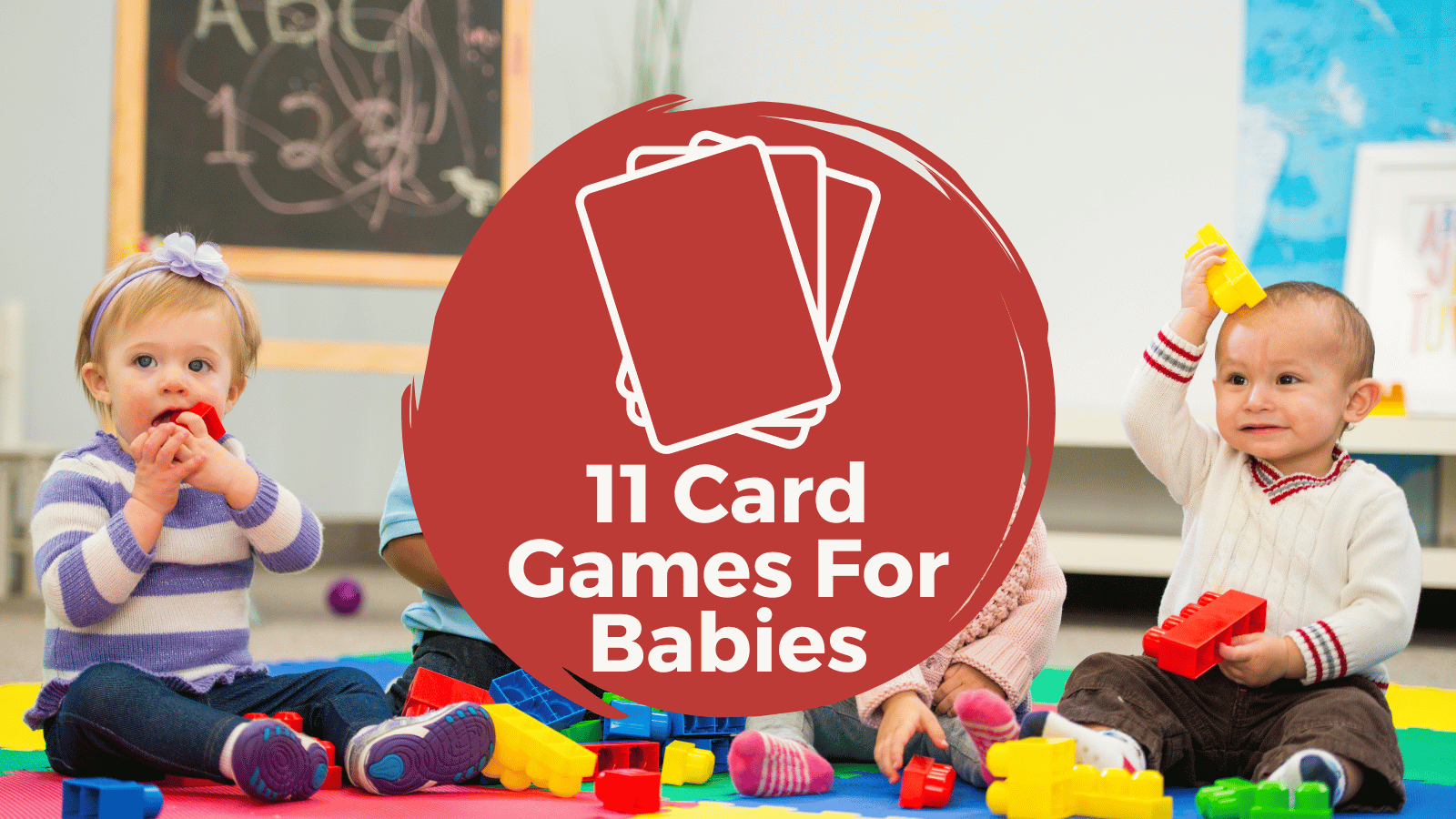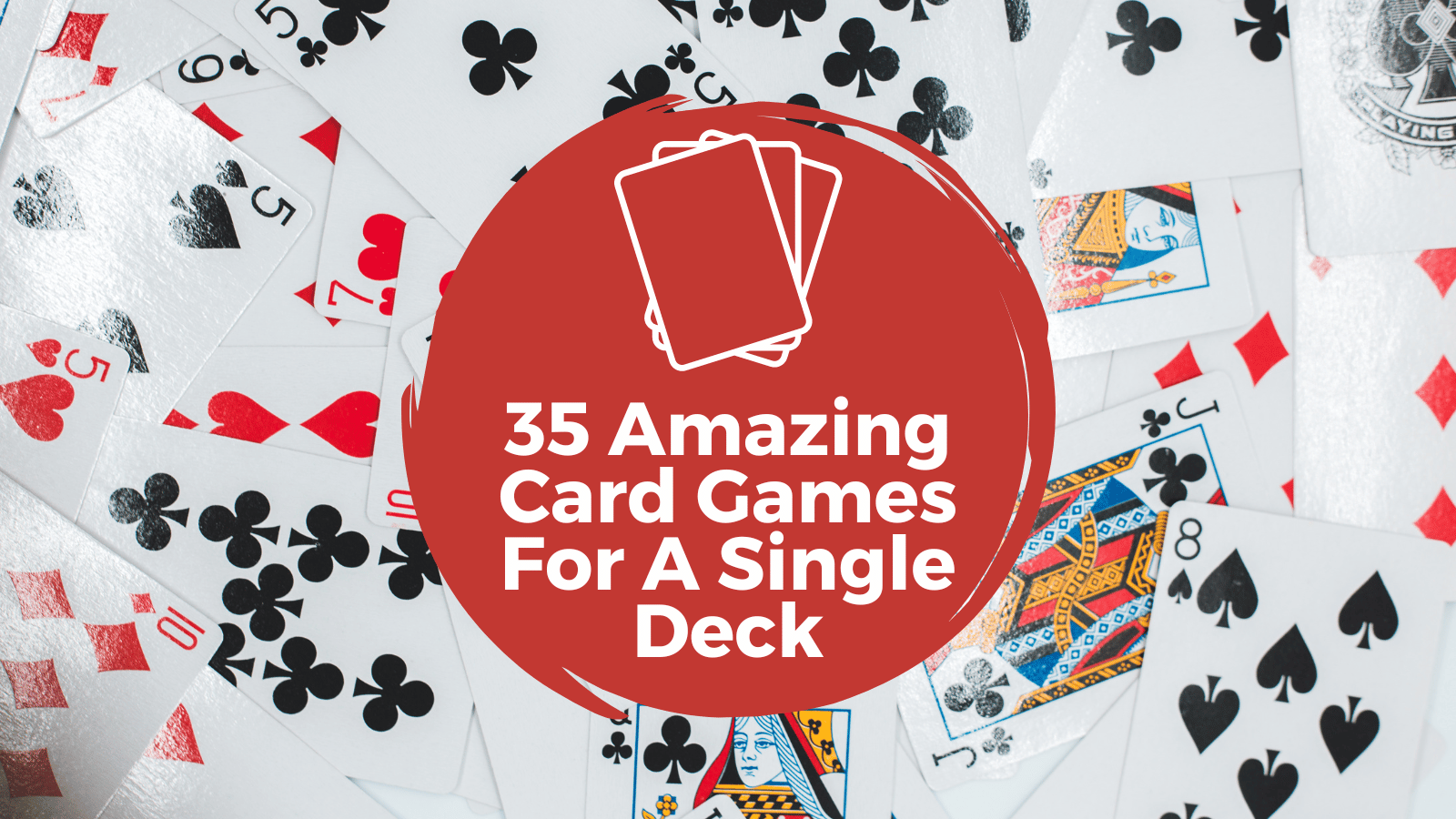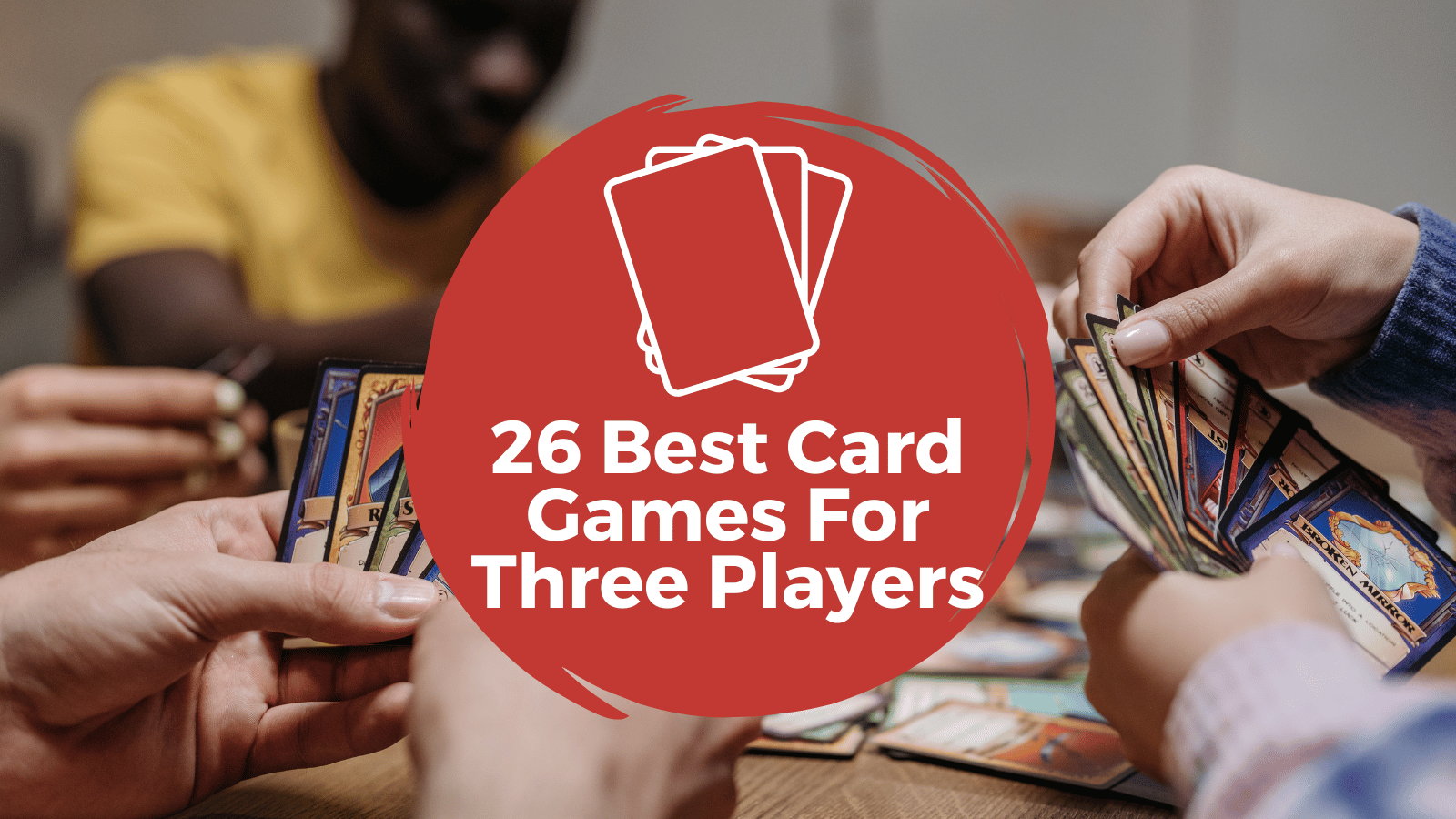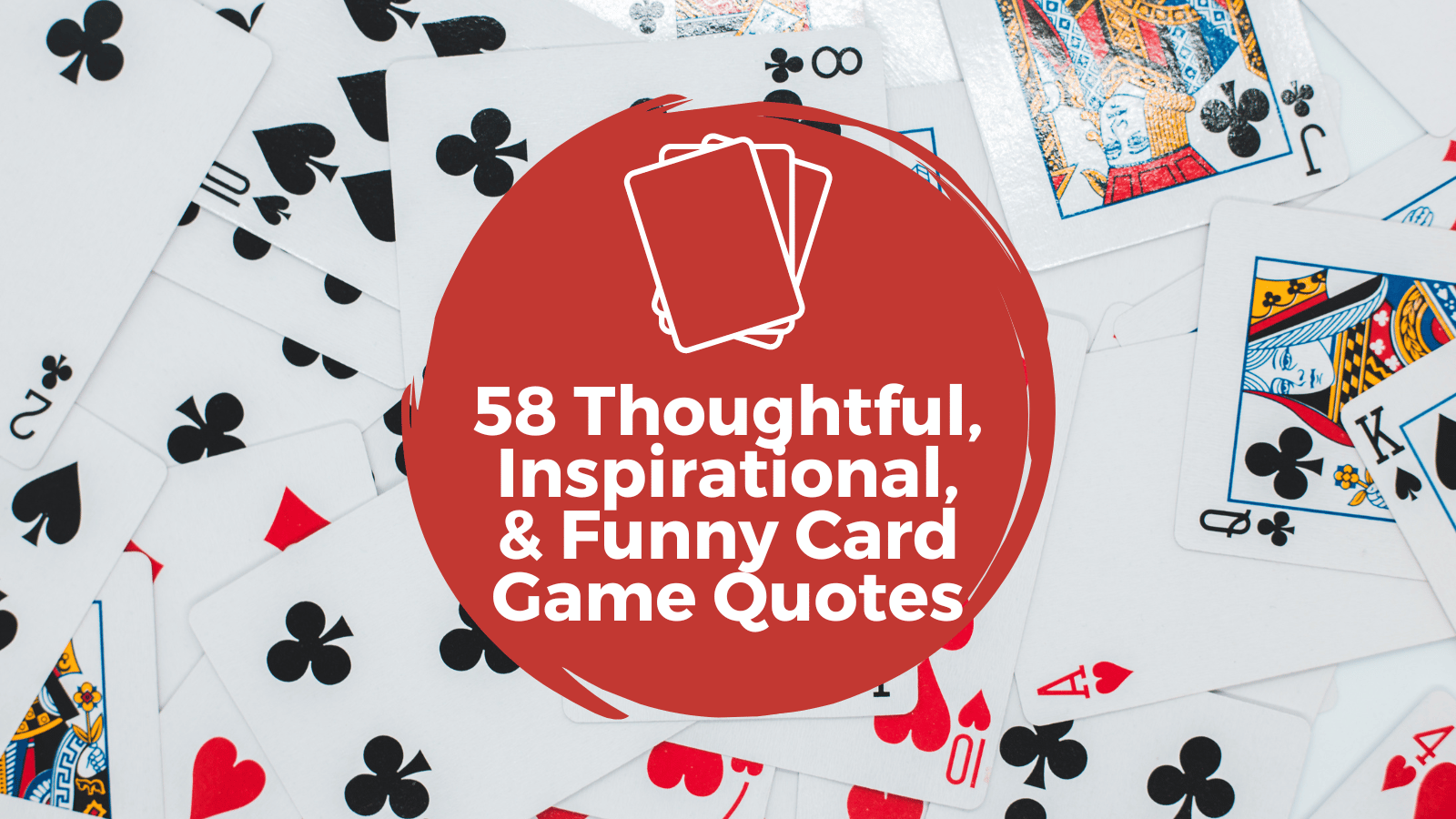Are there really such things as card games for babies?
Absolutely! And playing card games with your infants is an excellent way to develop their brains and coordination.
Now, I’m not talking about teaching them to play Texas Hold ‘Em; I’m talking about games appropriate for their level.
With this in mind, I searched the interwebs and my own experience raising three kids to create this list of 11 games you need to check out now!
Note: A lot of these games can be played with different decks, so feel free to buy one or more and play the games in fresh ways!
Table of Contents
1. Baby’s First Cards: Introduction to Shapes and Colors
In the wide world of games, babies aren’t excluded. In fact, they get some of the most delightful ones. Enter “Baby’s First Cards,” a game that’s as straightforward as it is fun, focused on introducing shapes and colors to the tiniest members of the family.
Think about it as a fun, tactile way to help your baby learn basic concepts. It’s as simple as holding up a card and identifying the shape and color.
“Look, sweetheart, this is a red circle!” Easy peasy, right? But in that moment, the baby’s brain is at work, gradually recognizing patterns, colors, and shapes.
The cards can vary from simple geometric forms like squares and circles to more complex shapes like stars and hearts as the baby grows.
Similarly, the spectrum of colors can grow from basic red, blue, and yellow to include a rainbow of hues. It’s like building blocks for the brain, each new card adding another piece to the mental puzzle.
The beauty of this game is not just in its simplicity but also in its flexibility.
You can play it anywhere: during tummy time, in the car, or even during bath time. It’s all about getting those tiny neurons firing and making learning as fun as possible.
So, “Baby’s First Cards” might seem humble, but they’re one of the first rungs on the ladder of cognitive development.
A deck of these cards could be your baby’s first step into a world of learning and, most importantly, a world of fun. Who knew teaching could be as easy as a game of cards?
2. Animal Cards: Learning the Animal Kingdom
Animal cards are a simple yet effective tool in the game of learning. With brightly colored pictures of animals printed on them, these cards bring the entire animal kingdom right into your baby’s tiny hands.
Picture this: a glossy-eyed puppy, a fluffy kitten, a hopping bunny – these aren’t just delightful sights for your little ones but stepping stones to recognizing different creatures.
The benefits of these card games are twofold.
Firstly, they contribute to the development of your baby’s visual recognition. Secondly, they lay down the foundation for language development, as the baby begins to associate the images with the words you use to describe them.
Imagine the excitement on your baby’s face as they successfully match the picture of a ‘woof woof’ with the sound you make.
You aren’t just playing a game; you’re unlocking an entire world of learning disguised as fun. That’s the magic of animal cards.
So, next time you’re looking for a playful activity for your little one, consider picking up a pack of animal cards.
And remember, as you’re chuckling at the mispronunciations and mimicking animal noises, you’re doing more than just having a laugh. You’re guiding your baby into the vibrant and diverse world of animals, one card at a time.
3. Peekaboo Cards: Enhancing Object Permanence
Who doesn’t love a good old game of peekaboo? Whether you’re a baby fascinated by your own toes or an adult, peekaboo always brings a smile to our faces.
But did you know that this seemingly simple game can do wonders for a baby’s cognitive development? Particularly, it helps in developing a concept called “object permanence.”
Now you’re wondering, what’s that, right? Don’t worry; we’re going to delve right into it!
Object permanence, in simpler terms, is the understanding that objects continue to exist, even when they can’t be observed.
As adults, we take this knowledge for granted. If you hide your car keys, you know they’re still there, out of sight but not out of existence. However, for babies, this concept isn’t as obvious.
So, how do we help our little ones grasp this fundamental concept?
Enter: Peekaboo Cards. These are not your regular cards; they’re specifically designed to promote the development of object permanence in babies.
Peekaboo cards work like a charm. They usually feature a colorful, engaging image that is covered by a flap.
You can show the card to the baby, let them see the image, and then cover it with the flap. The magic happens when you uncover the image after a while – voila, it’s still there!
This repetition of ‘disappearance’ and ‘reappearance’ helps the baby to understand that things still exist even when they’re not visible.
Regular play with peekaboo cards can aid your baby in reaching this important cognitive milestone.
It’s not just a game; it’s a fun, interactive way to boost your baby’s brain development. Just remember, it’s not a race. Each baby develops at their own pace, and that’s perfectly okay.
4. Sound Match: Connecting Sounds to Pictures
Have you ever noticed how a baby’s eyes light up when they hear a familiar sound? That’s not just adorable – it’s an opportunity for learning.
Enter the card game ‘Sound Match’, a unique game designed with the sole purpose of connecting sounds to pictures for the little ones.
This game is the Rosetta Stone of the baby world, deciphering the language of sound and image for those tiny, curious minds.
Here’s how it works. ‘Sound Match’ comes with a set of beautifully illustrated cards, each depicting a different object.
Some examples include a barking dog, a chirping bird, a ringing telephone, or even the comforting sound of a parent’s laughter. With each card comes an associated sound.
Playing ‘Sound Match’ is simple, but the results can be truly astounding. Hold up a card and play the corresponding sound.
The baby’s task? To connect the two.
While it might seem like child’s play (and indeed it is), it’s also an enriching learning experience that stimulates a baby’s cognitive development.
Imagine the joy your little one will have when they begin to associate the soft purr they hear with the image of a cuddly cat on a card.
Think of the excitement when they start to understand that the loud, joyful bark comes from the picture of the dog.
‘Sound Match’ is not only a fun game; it’s an interactive educational tool. It’s a way for babies to start making sense of the world around them, creating links between what they see and what they hear.
And who knows? Maybe the next time your phone rings, your little one might just point to the telephone card and giggle!
5. Texture Touch: Sensory Development Cards
Diving right into the sensory realm, let’s talk about Texture Touch: Sensory Development Cards. Imagine cards that can delight not only your little one’s eyes but also their sense of touch.
It’s like a miniature adventure for their tiny fingertips, just waiting to unfold.
These cards come with different textures, think smooth silk, rough sandpaper, soft cotton, or even bumpy cardboard.
As your baby grasps and explores each card, they’re not just having a good time, they’re also developing their tactile abilities.
Sensory cards play a vital role in stimulating your baby’s touch sense and enhancing their understanding of the world around them.
Think about it. Isn’t it fascinating how the world can be a whole new place just because you’re exploring it with your hands?
The same applies to babies, but even more so, since everything is brand new to them. Texture Touch cards can be their fun introduction to this touchy-feely world.
6. Flash Cards: Building Early Vocabulary
Flash cards are simple yet powerful tools in building a baby’s early vocabulary. But how does a humble card achieve that?
Picture this: each card displays a vibrant image – maybe it’s a dog, or an apple, or a toy truck.
You show these cards to your little one, articulating the word linked to the image clearly and deliberately.
The magic lies in repetition.
As you cycle through the deck day after day, your baby begins to associate those sounds – those words – with the images they’ve seen. It’s an enriching game for your baby that can double as a bonding session.
Soon enough, you might just find your child reaching out for the “apple” card when they’re hungry.
So, yes, a small piece of cardboard can indeed help develop a baby’s vocabulary.
Flash cards turn the complex task of language learning into a fun and engaging game. Isn’t it time to add a deck to your playtime routine?
7. Family Faces: Recognizing Loved Ones
We call this game ‘Family Faces.’ It’s a beautifully simple yet incredibly effective way to help your little one recognize the important people in their life.
In ‘Family Faces,’ we use cards bearing pictures of family members.
From mom and dad to siblings and even the family pet, every face that your baby sees regularly is included.
As you lay out the cards, one by one, you can point out the faces and say their names. “Look, baby, it’s big brother Jake!”
This easy-going game not only strengthens your baby’s visual memory but also sets the stage for developing social bonds.
As they grow, recognizing these faces will be second nature, creating a sense of familiarity and trust. ‘Family Faces’ is not just a game; it’s a unique way to introduce your baby to their loving family.
Note: While there are places that will make cards from photos of your family, just print some pictures as a cost-saving option.
Memory games like this are also perfect card games for those recovering from brain injury. Check out our list for more ideas on this topic.
8. First Words: Speaking with Cards
Ah, the joy of hearing your baby’s first words. A card game can be an excellent tool to encourage this magical milestone.
Imagine a set of colorful, enticing cards, each sporting a simple image. These pictures represent everyday objects or animals, like a “ball,” “cat,” or “cup.”
Sit with your little one and slowly go through each card. As you present each image, clearly pronounce the associated word.
Engage with your baby and the card. Hold the “ball” card, for instance, and ask, “Can you say ‘ball’?” Make sure to say the word slowly and with emphasis, all while maintaining a smile and eye contact.
This repetition, combined with the visual stimulus, can help your baby connect the spoken word with its meaning.
Remember, the aim is not to rush your baby but to create a fun, relaxed learning environment. So, even if your child responds with a babble or a giggle, it’s a win.
After all, these first steps towards speech are all about exploration and enjoyment.
9. Card Sorting: Introduction to Organization Skills
Imagine this: a deck of cards strewn across the floor, an array of colors and shapes, a mini chaos in the making. Now picture your little one, their curiosity piqued, trying to make sense of it all.
This is where card sorting games come into play.
Not only do they make for engaging playtime, but they also kick-start your baby’s organization skills.
Here’s the kicker: these games aren’t rocket science.
It can be as simple as sorting cards by color or shape. Blue circle with blue circle, red square with red square. What’s happening here? Your child is beginning to understand categorization.
And it’s not just about identifying shapes or colors. It’s about distinguishing differences, spotting similarities, and ultimately, organizing items based on specific characteristics.
This seemingly simple game is more than just play.
It’s their first foray into a world of organization, a crucial skill that will follow them throughout their life. And remember, it’s never too early to start.
10. Interactive Storytelling: Using Cards to Narrate Tales
Ever thought about how a deck of cards can spin a tale? Well, let me walk you through it.
Using cards to create narratives is an innovative way to spark your baby’s imagination and foster a love for stories. Each card could represent a character, an action, or a part of the story’s setting.
As you flip through the deck, watch your little one’s eyes light up as you weave a story, integrating each card’s symbol into the unfolding narrative.
Remember, it’s not about intricate plots or complex storylines. It’s about the simplicity of storytelling that engages your baby and promotes cognitive development.
This game is a beautiful blend of education and entertainment that opens up a world of wonder for your little one. It’s about planting the first seeds of storytelling in their young minds.
11. Baby Sign Language: Communicating with Cards
Here’s a way to give babies a head start in communication: Baby Sign Language Cards. You might be wondering, “Sign language? For babies?” Yes, indeed. Let’s dive into this intriguing game.
Imagine a deck of cards adorned with simple, clear illustrations, each representing a fundamental sign in sign language.
From ‘eat’ to ‘more’, ‘milk’ to ‘sleep’, each card provides a fun, visual way for you and your baby to learn together.
Now, how do you use these cards? Quite simple!
During playtime, show your baby a card and perform the sign. Then, encourage your baby to mimic your actions.
It’s fun, interactive, and incredibly helpful in building early communication skills.
So, not only are you introducing your little one to the world of card games, but you’re also giving them a stepping stone to express their needs before they can even say their first word.
Clever, isn’t it?











